Welcome To Our Irrigation Library!
Successful Compliance For Water Regulations
Installing and operating an irrigation system professionally comes with plenty of benefits, like consistent and efficient water use, time and cost-saving, increased plant health and property value and so on. Efficient water use and conservation contribute to environmental sustainability as well. But we can’t walk away from that an incorrectly installed system can lead to various negative impacts and breaking the rules is just one of them. However not to comply the recent water regulations can result in legal consequences, fines, or restrictions on water usage.
To avoid these unpleasant consequences, let’s look into to the latest relevant UK law, the Water Supply (Water Fittings) Regulations 1999. This law replaced the old Water Bylaws nearly a quarter century ago this is the only current standards in this field.
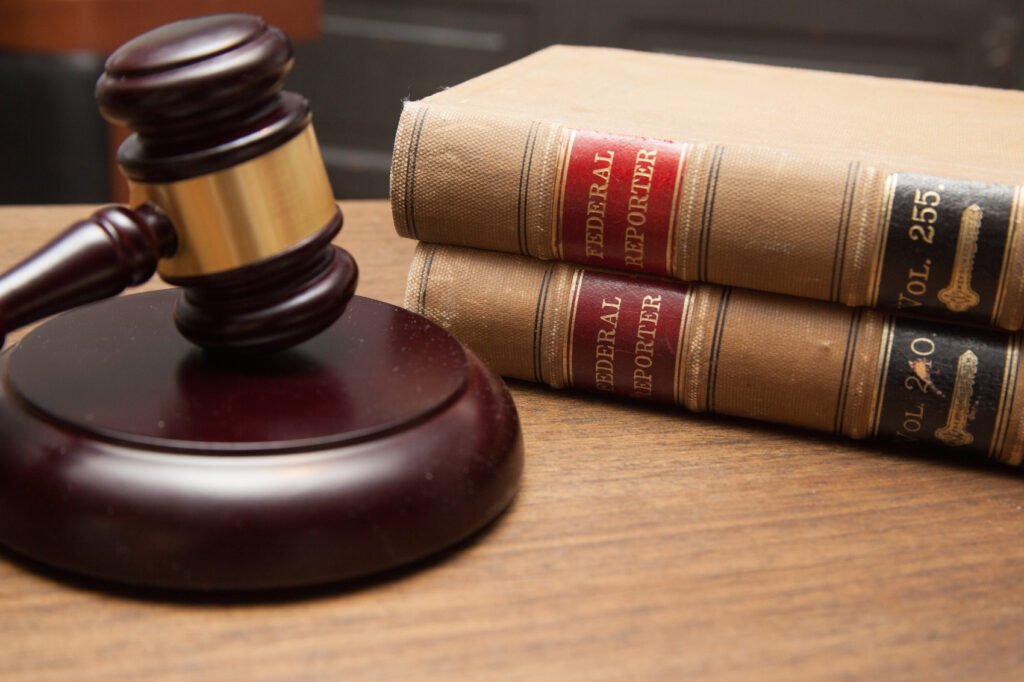
Reporting the installation
Before delving into the facts deeper, the first thing worth to mention that not any kind of irrigation system (other than a handheld hose) can be installed without prior consent of the water authority (local water board). The responsibility lies with the owner to inform and seek consent from the board before initiating the installation process.
Hazards To The Mains Supply
Connecting the irrigation system to the mains water supply may put the water bodies in risk as follows:
- Cross-Contamination: If the irrigation system is improperly connected, there’s a risk of cross-contamination between the potable water supply and the irrigation water. This can introduce contaminants, such as fertilizers or pesticides, into the drinking water system, posing health risks.
- Water Quality Issues: Improper connections may compromise the quality of water supplied to the irrigation system. Contaminants or impurities from the surrounding environment or non-potable water sources may enter the system, affecting the health of plants and potentially causing clogs or damage to the irrigation equipment.
- Environmental Impact: Contaminants introduced into the irrigation system may have adverse effects on the surrounding environment. Runoff containing pollutants can harm local ecosystems and water bodies.
Other RisksTo COmply With Water Regulations
Obviously an improper connection may cause issues for you as well, like these:
- Reduced System Efficiency: Incorrect connections may lead to pressure variations, inconsistent water flow, or inefficient distribution within the irrigation system. This can result in uneven watering, negatively impacting plant health and the overall effectiveness of the system.
- Equipment Damage: The introduction of impurities or contaminants from an improperly connected water supply can damage irrigation equipment, including valves, pipes, and emitters. This can lead to increased maintenance costs and the need for frequent repairs.
- Waste of Water: Inefficient connections may result in water wastage through leaks or inefficient distribution. This not only contributes to increased water bills but also contradicts the principles of water conservation and sustainable irrigation practices.
- Health Risks for Plants: Poor water quality due to incorrect connections can negatively impact plant health. Plants may suffer from nutrient imbalances, diseases, or reduced growth, leading to an unhealthy and unappealing landscape.
Regarding the possible effects above, the water regulations describe the minimal connection requirement for any type of irrigation system considering the different type of emitters used on the systems. The irrigation solutions are grouped into fluid categories based on certain properties and the acceptable connections are ordered to these categories.
Fluid categories
Preventative Equipments For Categories
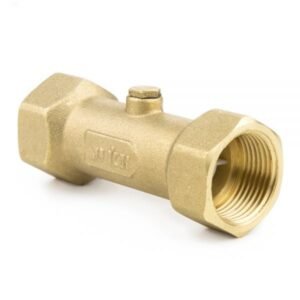
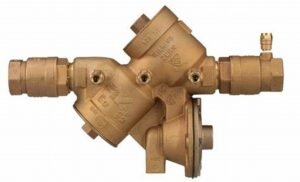
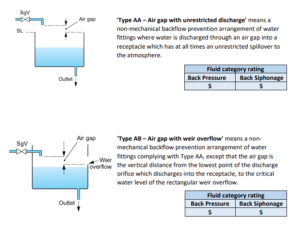
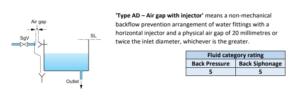
RPZ units
As the name of the Reduced Pressure Zone (RPZ) unit shows it’s meant to reduce the existing water mains pressure further. That’s for establishing a pressure difference between the mains side and the irrigation side on purpose. That makes the available pressure even lower so this solution is not suitable for most of the time.
Air gaps
As you may have worked out that the air gaps are supposed to interrupt the direct connection between the mains supply and the irrigation system. Obviously the available pressure and flow from mains will be lost by installing this solution. Hence our first task is to rebuild them after the air gap. This is the main reason for installing an irrigation pump.
Consequently, irrigation systems are better to be installed with tank and pump, except in the rear case when there are micro/field stand zones are designed only. Of course when the available pressure is strong enough to operate the sprinklers.
Irrigation systems designed by The Gardener’s Rain follow the latest water regulations. All our quotes contain the necessary connection types, so you don’t have to worry about it.
The good news
But there’s more then one side to a coin. Luckily installing a booster (pump and usually a tank) makes the system independent and scalable to your needs. It’s not just a costly requirement but makes the system design more flexible and expandable.
In summary, following water regulations ensures that irrigation systems operate safely, efficiently, and responsibly. It protects the environment, public health, and the integrity of water supplies while fulfilling legal requirements. Customers and professionals alike should stay informed about and adhere to these regulations to contribute to sustainable water use practices.
